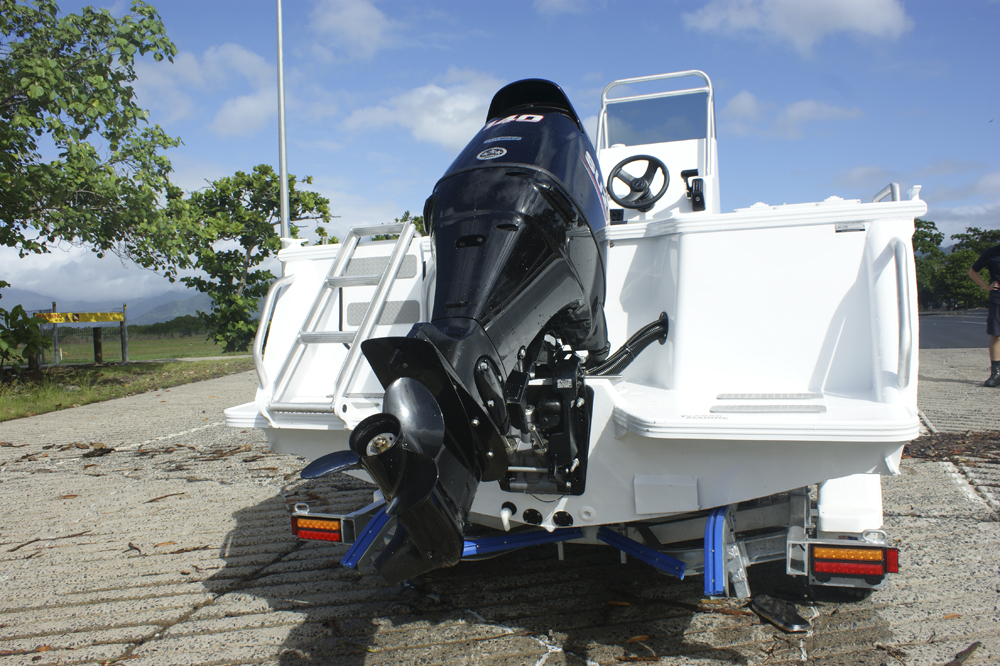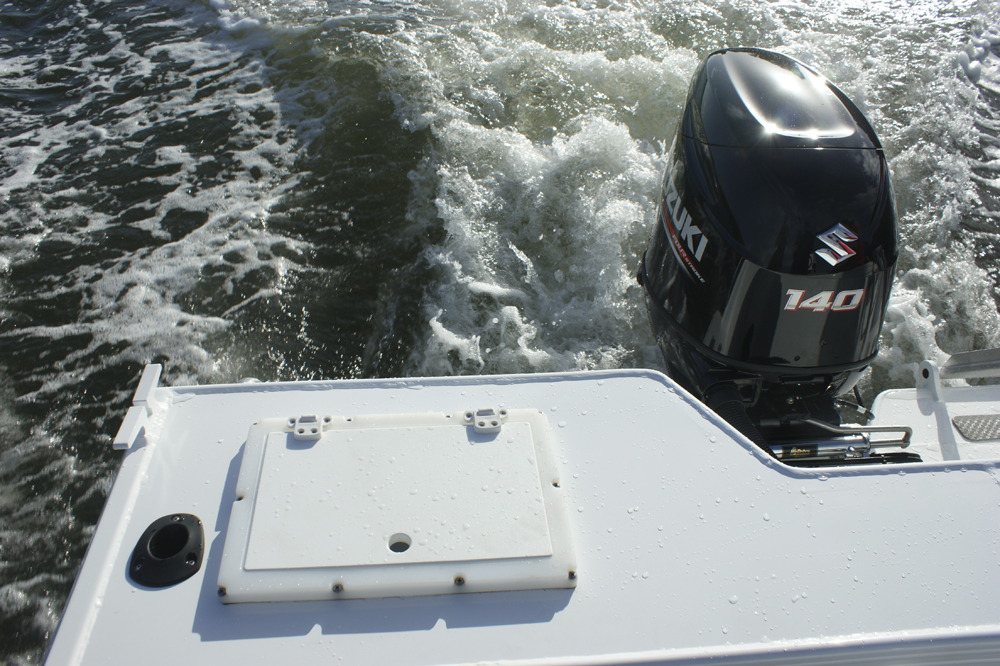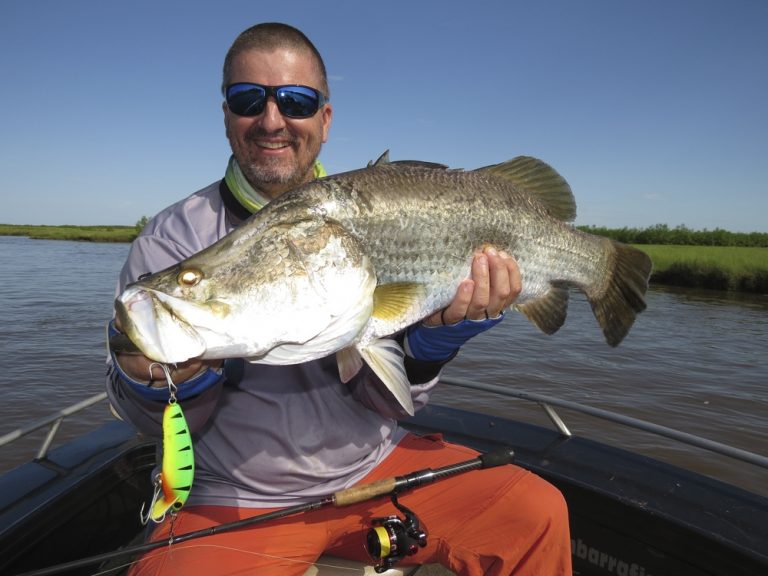Corroboree Capers – By Dave Donald
When you’ve spent a lifetime chasing fish as I have, somewhere along the way the realization dawns that there’s much more to fishing than just catching fish.
That fact seems to becomes even more vivid when the opportunity comes to visit places that are more remote and consequently, very rich in natural terms.
It’s difficult to ignore an environment where the wildlife, both terrestrial and marine, are abundant, and limit your focus to just those few target species on your bucket list. The world is suddenly revealed as so much more than a barra or thready spot, rather that these species are simply a part of a complex interwoven web that revolves around the interaction of a myriad of flora and fauna that provide you with the opportunity to wet a line.
It’s almost as though a pair of blinkers have been removed from your eyes! Where once the graceful flight of a sea eagle would have gone unnoticed, now you stop and marvel at its agility. Searching for turtle tracks on the beach while travelling just offshore now becomes routine rather than an afterthought. Where once fishing was all about filling an icebox, it becomes more of an appreciation of another opportunity to experience the ‘wholeness’ of the natural world.
Such feelings are easy to nurture in places like Cape York Peninsula and the Northern Territory. As somebody who has had the pleasure of living on the Cape for nearly 30 years, I can readily identify with plenty of places that have given me immense pleasure over the years, both in fishing and whole of environment terms. In fact, these two are complimentary.

One of the stand-outs that immediately comes to mind in this regard – as far as the NT goes – is Corroboree Billabong! I’ve visited and worked in the Territory a number of times in the last 15 years and after my initial visit there, quickly came to the conclusion that no fishing trip to the Territory is complete without a trip to this almost magical place.
Corroboree Billabong is part of the Mary River catchment and just over an hours drive from Darwin – in NT terms almost in the suburbs! It’s not the sort of spot you’d go expecting to catch a heap of big barra – except maybe at run-off time – but once the dry season comes along, there are usually plenty of medium sized ‘mundi spread throughout this extensive system.
The Billabong also supports a sizeable population of saratoga as well as tarpon and the inevitable catfish. It’s chock a block with snags plus a couple of rock bars while the greenery includes millions of extra large sized water lilies that cover more and more water as the dry progresses. This proliferation of lilies and snags certainly make it more amenable to lure fishing, rather than bait. Trolling the long, more open reaches is very popular and can be productive at times, but for my money, casting a lure or fly is the ideal way to enjoy this wonderful waterway.

Probably the most enjoyable fishing I’ve experienced at Corroboree happened while casting weedless rigged soft plastics over the lilly pads using a light tipped spin outfit loaded with 7kg braid. The lures were tossed well up towards the shoreline over the floating greenery then slowly retrieved across the mosaic back into open water, while trying to target the larger ‘holes’. Most of the strikes came when the plastic ‘hopped’ from the pads into the water.
The majority of the culprits in these cases were acrobatic saratoga but there were quite a few barra on the job as well. Keeping a ‘toga attached to a hook is not easy at the best of times but the degree of difficulty increased several fold when the underwater forest of lilly stalks was factored into the equation. It was white-knuckle stuff on the one hand but hilarious on the other as these ‘prehistoric’ beauties made their escape time after time. The few that reached the boat were admired and much appreciated before being released.

My guide and companion on a couple of these Corroboree casting sessions was master rod builder and good mate, Larry Lockwood. We have an absolute ball flicking around the football field sized lilly ‘jungles’, honing our casting skills along the way. Competing for the fishiest looking pockets is all part of the contest but sometimes the strikes come when you least expect them – and that usually prompts a few more derogatory comments from the ‘unlucky’ fisho.
Saratoga have a very hard, bony mouth and that, coupled with their twisting jumps, makes them very difficult to keep hooked. Their ability to shed a lure is further enhanced when a soft plastic is rigged on a leadhead jig as the weight acts like a pendulum when the fish shakes its head, often causing the hook to come free.
This effect can be minimized by using TT Snakelockz jigs, as the swivelling head seems to negate the leverage afforded by a fixed weight. In fact, the first time I ever used the Snakelockz on saratoga (in the Wenlock River), my score of 5 out of 5 strikes landed was unprecedented at that time and remains so to this day!
Casting amongst the lilly pad is probably not the best way to catch a barra however. If a sizeable one comes along, wrestling it out of the maze of stems becomes a major problem. Even the smaller models can sometimes tangle the lure and pull free quite easily, so if old Pink Eyes is on your list, it’s probably better to find a suitable open stretch and try some trolling.

Both hard bodied and soft plastic lures can be trolled, usually at idling speed. Many experienced fishers use an electric motor to work their lures, keeping any noise to a minimum to enhance their strike rate. Using a sounder to locate where fish may be sitting is another smart move as those areas can be targeted by lures trolled at the appropriate depth. In these days of side scan sonars, that task is being made very much easier.
One other regular inhabitant of Corroboree Billabong is the estuarine crocodile, in fact it’s reputed to be the most heavily populated waters for that iconic reptile in Australia. No visit is complete without sighting a dozen or more of these fantastic creatures, some of them usually over 5 metres in length. Just be sure to keep your feet and hands inside the boat at all times and no matter how hot you feel, DON’T go swimming!
One of my most vivid encounters there was coming across an ‘old man’ buffalo, obviously a veteran of a few stouches with his compatriots as he’d lost a chunk of one of his trophy set of horns. The buff seems totally unconcerned when I came over to take a couple of happy snaps but quickly dissolved into the bush when the camera started clicking. Those special moments topped off a unforgettable day on the Billabong.
So, I’d suggest if you haven’t been to Corroboree Billabong yet, make sure you put it on your bucket list. But, more importantly, make sure that next time you’re out fishing, take a good look at what’s happening around you and enjoy the full extent of what nature has to offer. I can guarantee that your fishing trips will never be ‘boring’ again!





